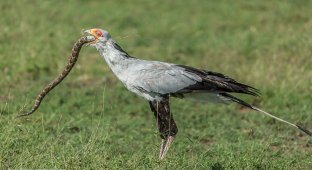A black whirlwind circles over bustling markets and filthy dumps. These are marabou storks—an elite squad of total cleanup crews. In the savannah, these birds fulfill the honorable role of sanitation workers. But in cities, they have become mirrors of our civilization: they eat inedible things and raise their chicks on garbage. Nature gave them the role of guardians of cleanliness, but we have made them hostages of waste. 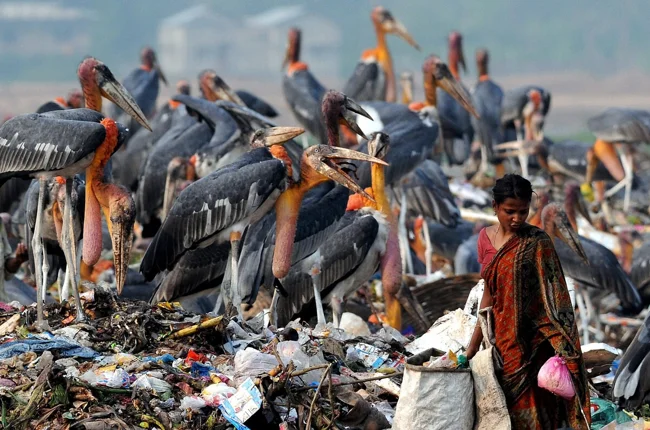
As is the country, so are its pigeons.
Marabou storks are the largest modern storks. This genus includes three species: the African, Indian, and Javan storks. All of them are incredibly healthy: they stand 150 cm tall and have a wingspan of 2.5-3 meters! But size is far from their most remarkable feature. 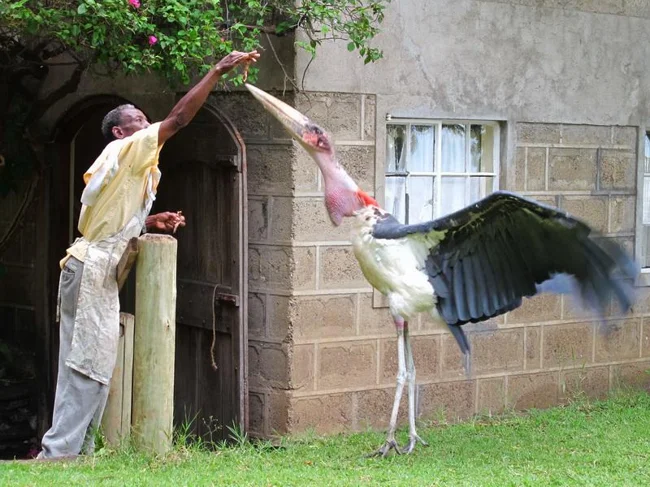
Waste disposal, African style.
The only thing the marabou stork retains from the familiar storks is their name. The locals didn't mince words and called them "the undertaker bird." Their mournful black and white plumage, disproportionately large, coarse beak, and bare red neck and head are simply terrifying to imagine what kind of baby SUCH a stork would deliver! 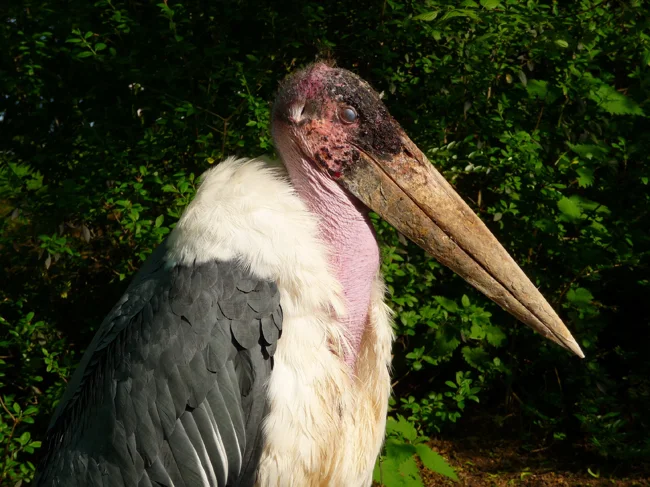
— Hello, stork! What a great Halloween costume! — It's not a costume...
These half-naked birds are the last resort for all living things. They are not just scavengers, but an elite squad of total cleanup agents. To digest rotten meat and other waste, the birds have four levels of defense. The first is mechanical. Their huge beaks work like giant tweezers, handy for plucking edible parts from the very depths of someone's carcass. The bare skin on the head and neck serves as a butcher's apron—blood, dirt, and other substances don't stick to the body. And if they do get on the skin, removing the impurities from the bare surface is much easier than from feathers. 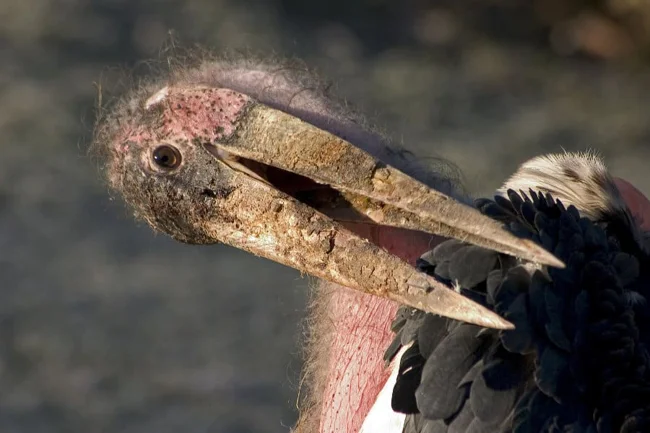
The older the bird, the fewer feathers it has on its neck.
The second level of defense is chemical. Marabou storks can safely eat absolutely any quality food, as their digestive tract is akin to an industrial chemical laboratory. It digests absolutely everything: from bones and skin to salmonella, botulism, and anthrax bacteria. In the first, glandular stomach, birds produce a powerful gastric juice, the pH of which is comparable to battery acid. It kills most germs. What survives is finished off by enzymes and bacteria from the birds' digestive tract. 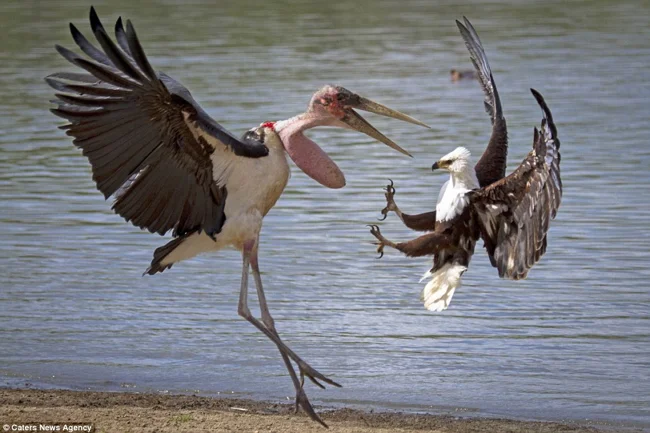
Marabou storks take advantage of their size. They often steal and take prey from smaller birds.
And this is the third level, the biological one. Thousands of "beneficial" single-celled microorganisms assist in digestion and slow the growth of pathogenic microbes. These microorganisms are already accustomed to the harsh acid and enzymatic attacks. The marabou's gut microbiota helps break down and extract the last bits of nutrients from even the most spoiled foods. In the second muscular gizzard, everything the bird eats is mechanically ground and finally digested. 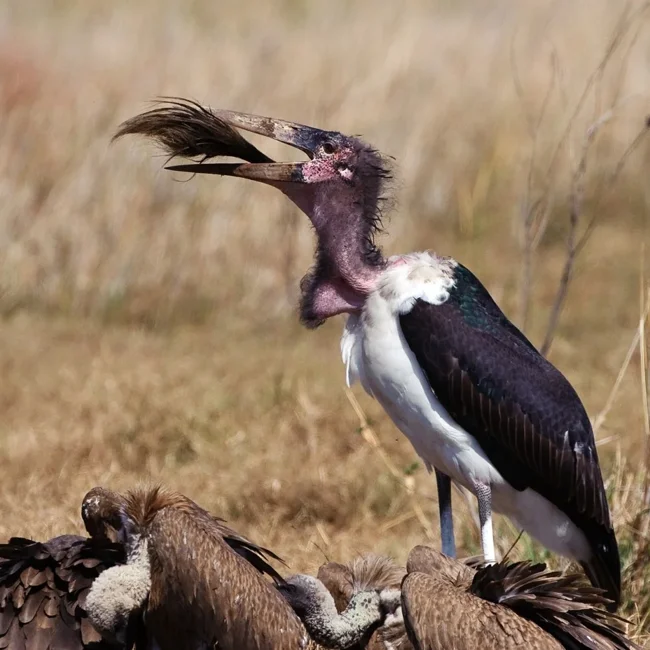
This is how life ends if you indulge in too much hakuna matata!
The final level of defense against toxins and pathogens is the immune system. If some stubborn bacteria manages to get past the previous stages of defense, immune cells will be waiting outside the digestive tract. They will kill off any pathogens, and the marabou will not become infected. 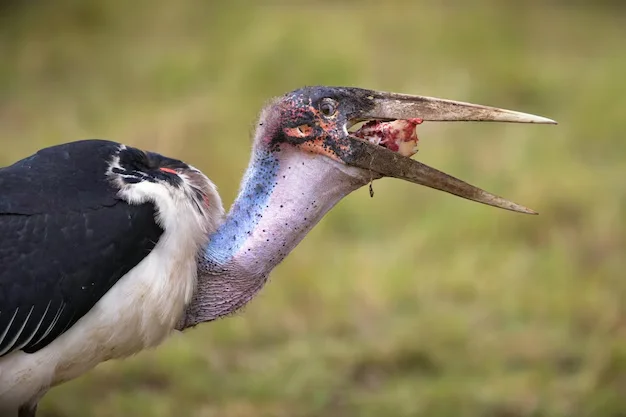
The way a dog looks at me when it picks up something from the street.
Thanks to four stages of defense, these half-naked birds can feed even on things that other scavengers refuse: rotten meat, bones, excrement, and garbage. Therefore, marabou storks are an indicator of the region's ecological situation. Just look at what local storks eat, and everything will become clear. In relatively healthy habitats, the birds eat as usual: they scavenge carrion in forests and swamps, take prey from predators, and sometimes even hunt for food themselves. This is how Javan marabou storks live. 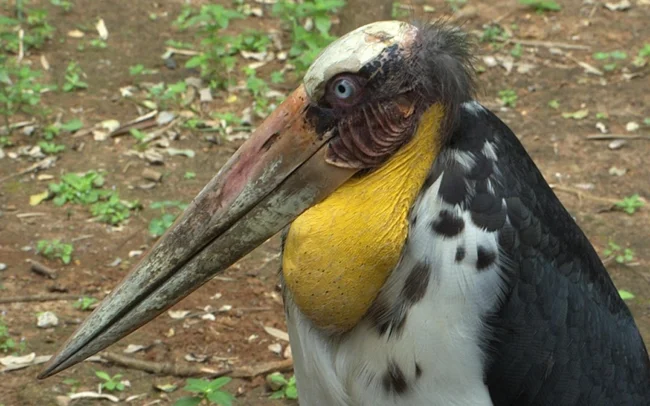
The Javan marabou differs from the other two species by its yellow throat pouch.
In India, Bangladesh, Nepal, and Cambodia, scavengers have migrated closer to cities, to giant garbage dumps. Marabou storks are attracted by the "easy food" found in garbage dumps, but research shows that it's not all that easy. Among the garbage, the birds most often encounter plant remains and human food, which, compared to meat, even if rotten, is far less calorific. Therefore, the birds have to spend more time searching for food. Moreover, this diet is rich in all sorts of preservatives, pesticides, and other chemicals, against which the marabou has no defense. For example, the Indian marabou population is now on the verge of extinction. 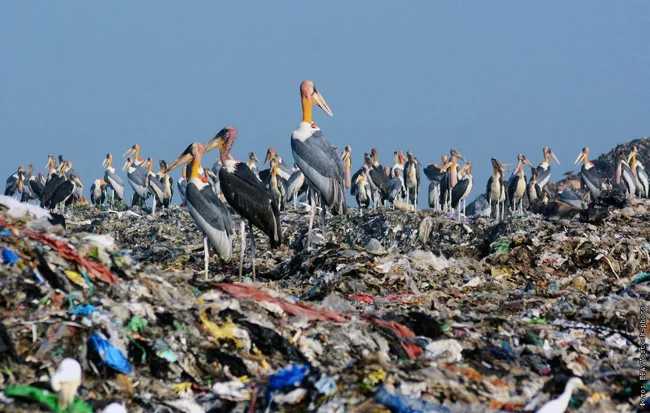
Sewage Angels Marabou stork. 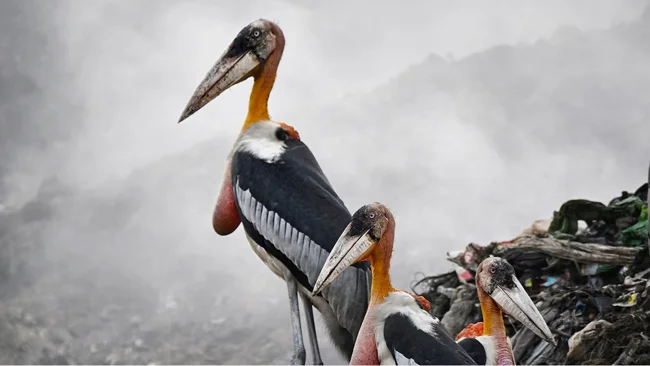
Birds really do survive in the post-apocalypse! Also an Indian marabou.
It's a similar story with African birds. They're even called "garbage storks" for their penchant for scavenging. They casually wander city streets, picking up anything that's not nailed down. But locals treat marabou storks with reverence and respect—they're practically considered sacred. And it's a fact: if these birds didn't recycle their waste, all sorts of epidemics would likely occur far more frequently. However, this lifestyle is completely unnatural for the birds themselves. This especially affects their chicks. 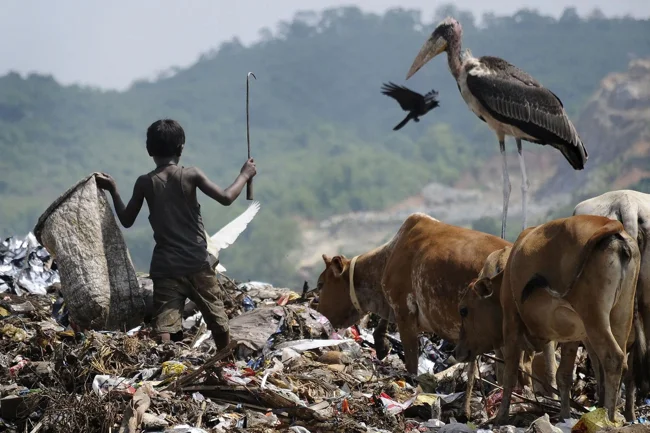
When your mom comes into your room to watch you clean it. An African marabou. 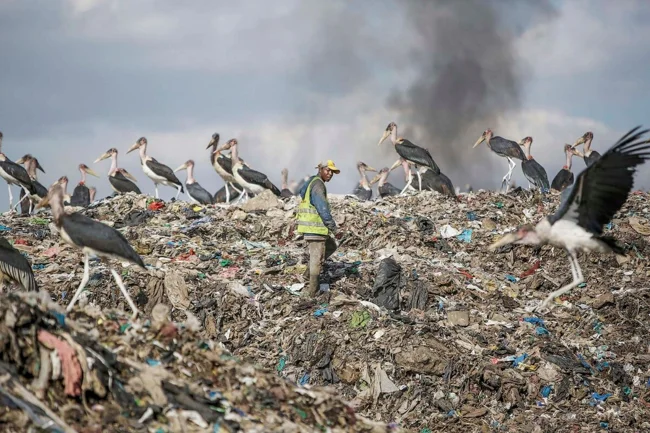
Also an African marabou. For some reason, everyone goes left... 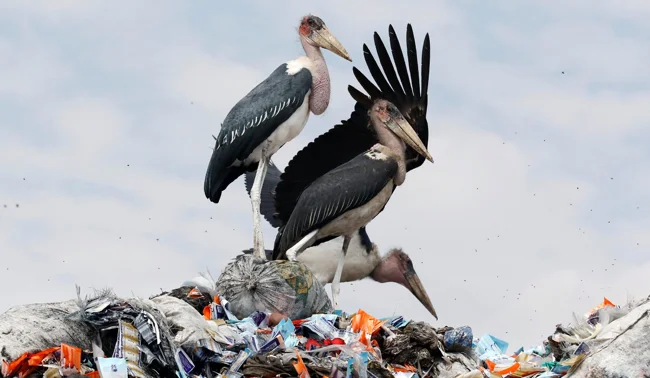
And this is African. Looks like they're playing "King of the Hill."
In the wild, marabou parents invest diligently in their offspring. The female lays 1-3 eggs in a large nest of twigs and feathers and incubates them for about a month. Afterward, despite their preference for carrion, both mother and father hunt live prey. At first, the chicks feed exclusively on fresh meat—they can't yet digest heavy, rotten food. 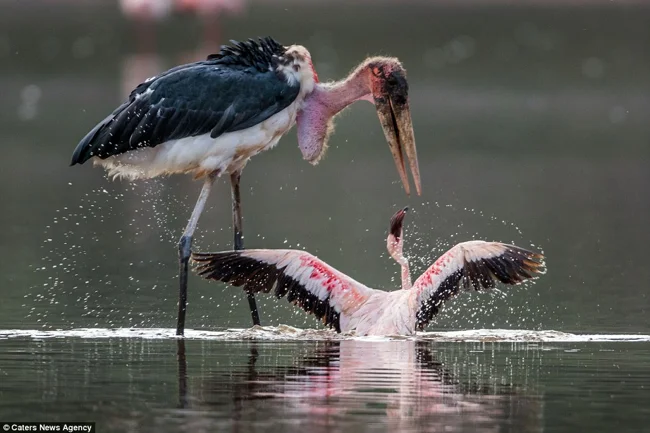
A giant beak can be used not only as delicate tweezers, but also as a powerful crowbar. 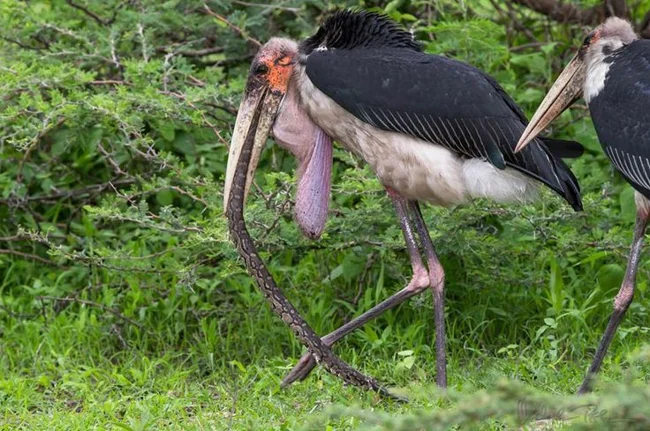
Mmm, snake spaghetti!
At least, that's how it was before humans arrived. In places where birds feed on landfills, they also bring toxic treats from the trash to their chicks. Young storks die from poisoning and obstruction: their stomachs become clogged with human waste—bags, plastic, and metal. 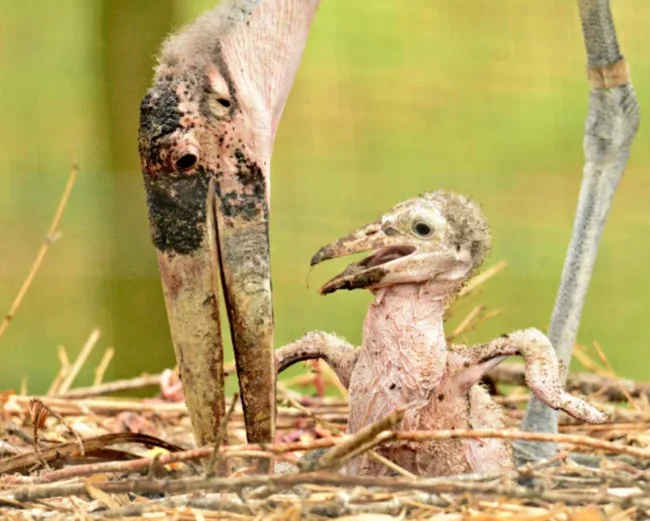
— Mom, what are we having for dinner today? — Fried nails!
Marabou storks have become a mirror of our civilization. Where there are savannas and swamps, they remain majestic caregivers, maintaining nature's balance. But where there are landfills and filth, they become grim symbols of the waste humanity leaves behind.
Add your comment
You might be interested in:














